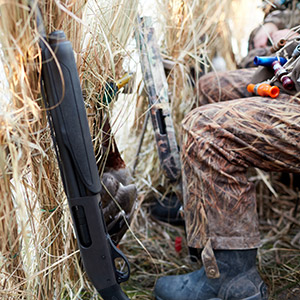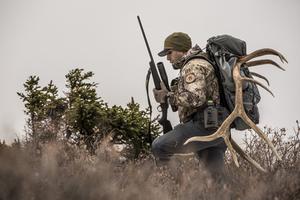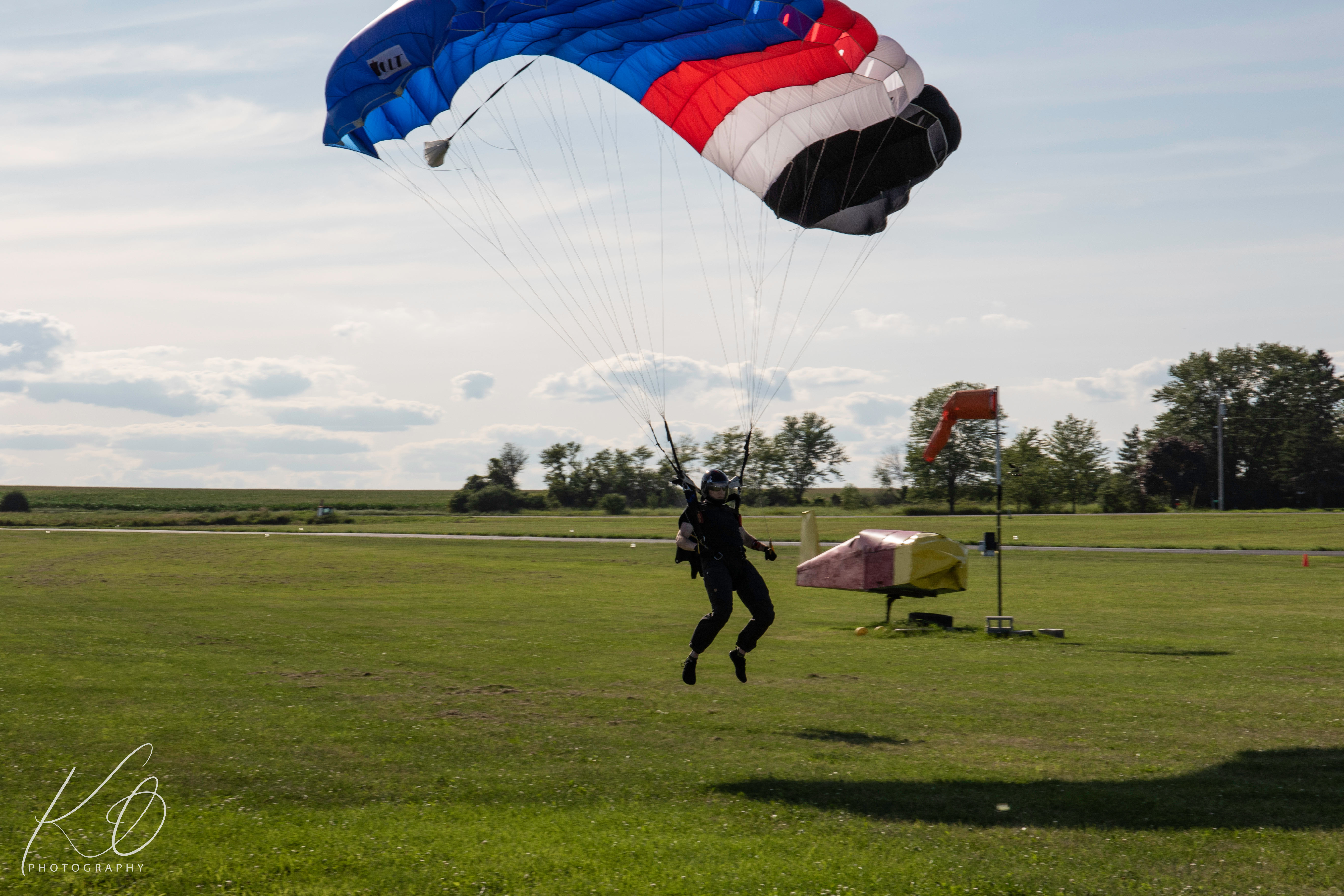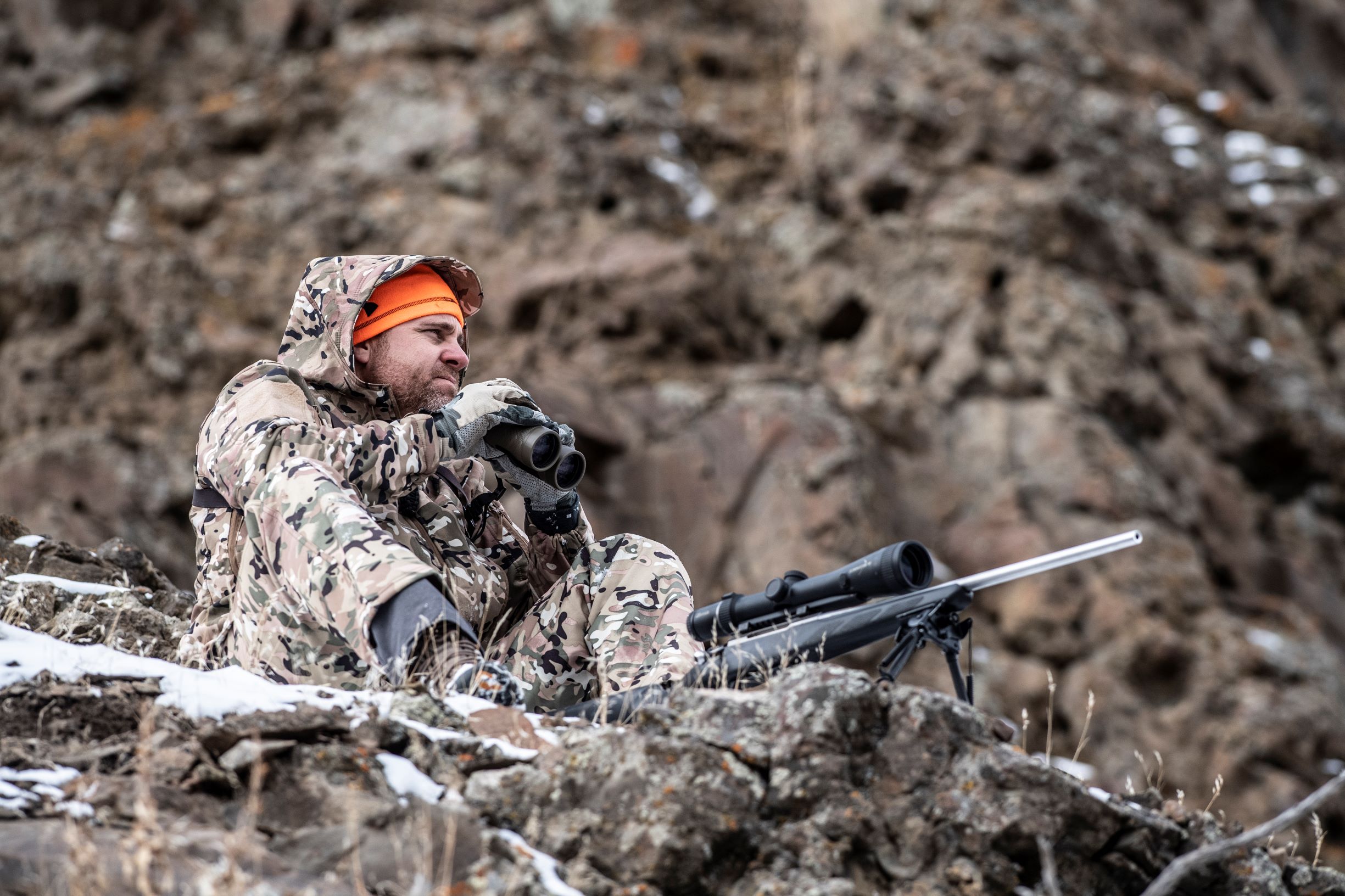
Hunting clothes are an essential, yet often overlooked, element of any successful hunting trip. Choosing what to wear on a hunt impacts your comfort, camouflage, protection, and utility. However, hunting apparel isn’t always universal, and you need different threads depending on the type of hunt and location. In this guide, we’ll break down what clothes you should pack for a hunting trip based on the temperature, weather conditions, and type of hunt.
How to Choose the Best Hunting Clothes for Cold Weather 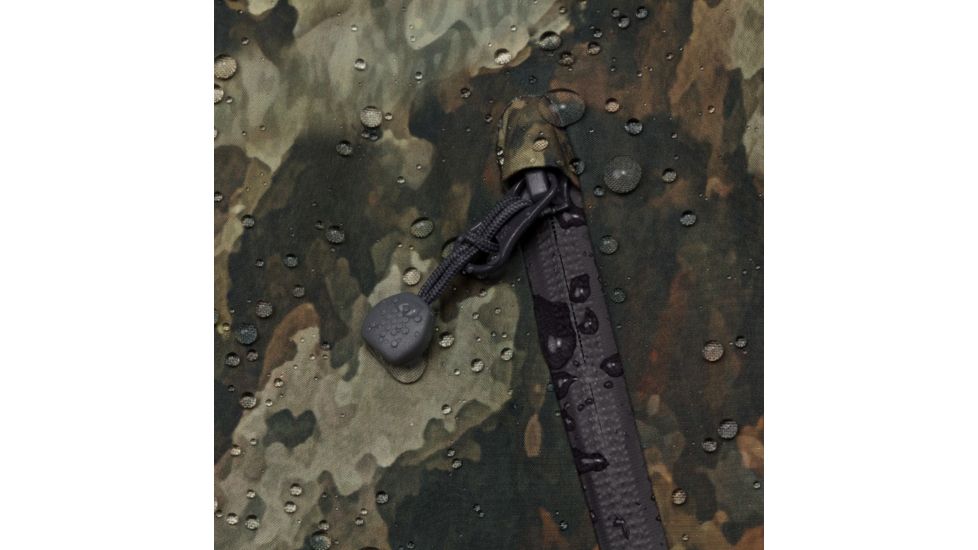
The first element to consider while choosing a hunting outfit is temperature. Wearing layers is the best way to maintain a comfortable temperature while outdoors. It is better to have too many layers than not enough. You can always remove a layer if it gets warmer throughout the day, but you can’t add extra layers if temperatures are colder than expected.
How to Layer Hunting Clothes 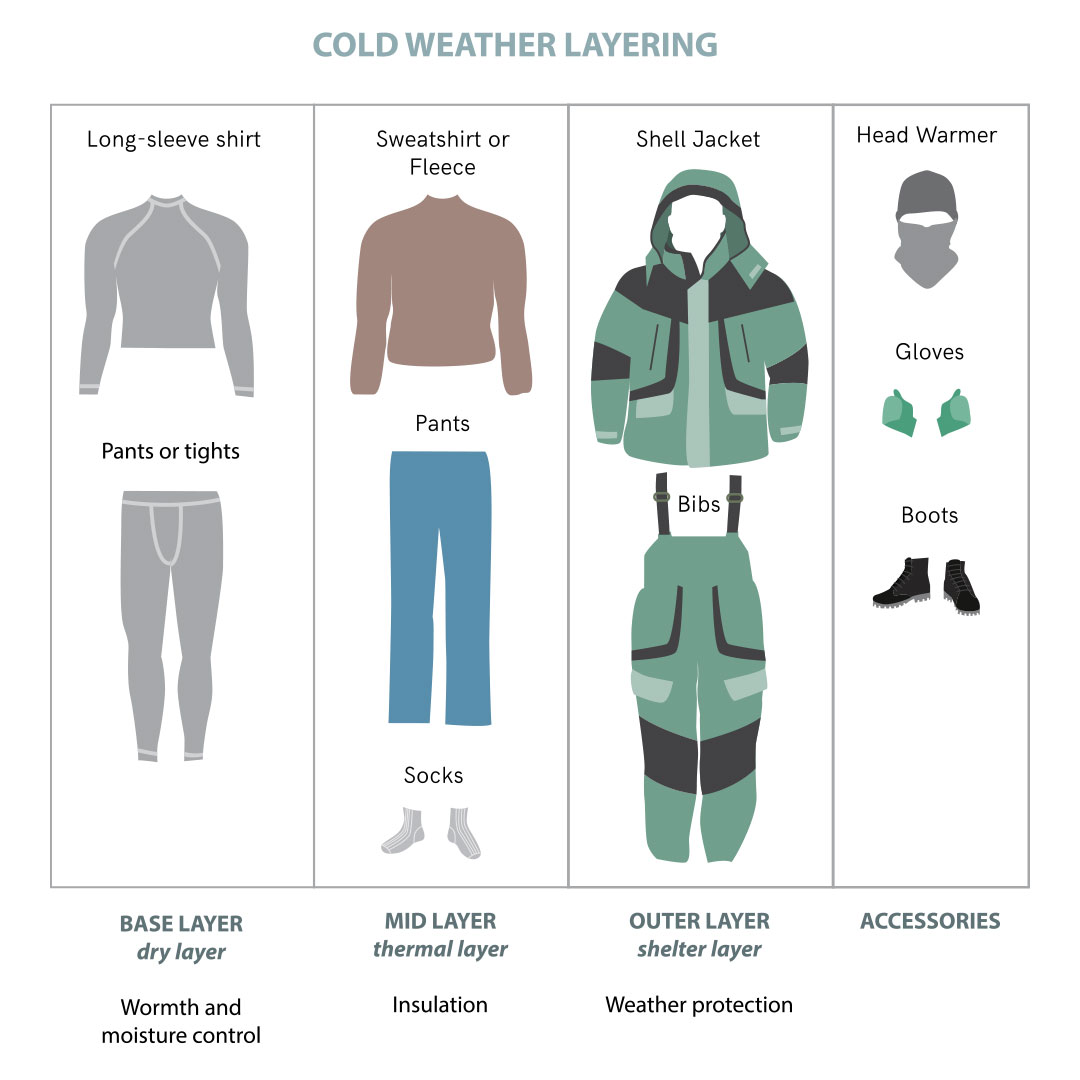
Layering your hunting clothes is the most important factor when it comes to temperature control, but this doesn’t mean you just toss a few random items of clothing on and call it a day. You need to select your layers of hunting clothing so that they work as a system (three-layer clothing system) to regulate your body temperature, keep you dry, and protect you from the elements. There are three main types of layers:
- Base layer (inner-layer)
- Mid-layer
- Outer-layer (shell)
Base Layer
The base layer is the first to go on and has the most contact with your skin. Some examples of base layers include thermal underwear, socks, and long sleeve shirts.
The main purpose of a base layer is to wick moisture away to keep you dry and comfortable.
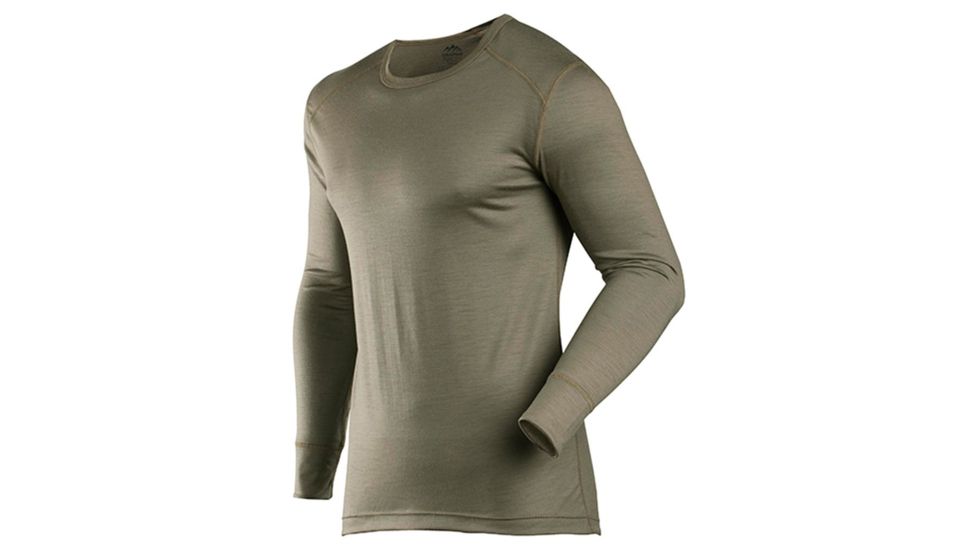
Sweat is our body’s natural temperature control, and managing sweat properly will keep you dry and comfortable throughout the day. Most base layers fall into one of these three categories:
- Lightweight
- Midweight
- Heavyweight
Lightweight base layers have excellent moisture-wicking and quick-drying properties, but they provide limited insulation compared to heavier base layers.
They are most commonly made from polyester and other synthetic materials like spandex. Light base layers are ideal for warmer climates and physically demanding hunts. If you’re going elk hunting or hunting in mild conditions, choose lightweight base layers.
Midweight base layers offer a middle ground between lightweight and heavyweight layers. They are efficient at wicking away moisture but provide extra insulation for colder climates. Many midweight base layers are made from merino wool which offers additional benefits like next-to-skin comfort and enhanced odor control. You should wear midweight base layers if you’re hunting in cooler temps or expect moderate physical activity.
Heavyweight base layers are for extremely cold and/or harsh conditions. They provide plenty of insulation to keep you warm, but they also need to be breathable and well-ventilated for comfort. Heavyweight layers can be made of synthetic materials or wool. These thick base layers are ideal for winter hunts and frigid temperatures.
Mid-Layer
Mid-layer hunting clothes build off the base layer to remove moisture and lock in heat.
The main purpose of a mid-layer is to provide insulation to keep you warm.
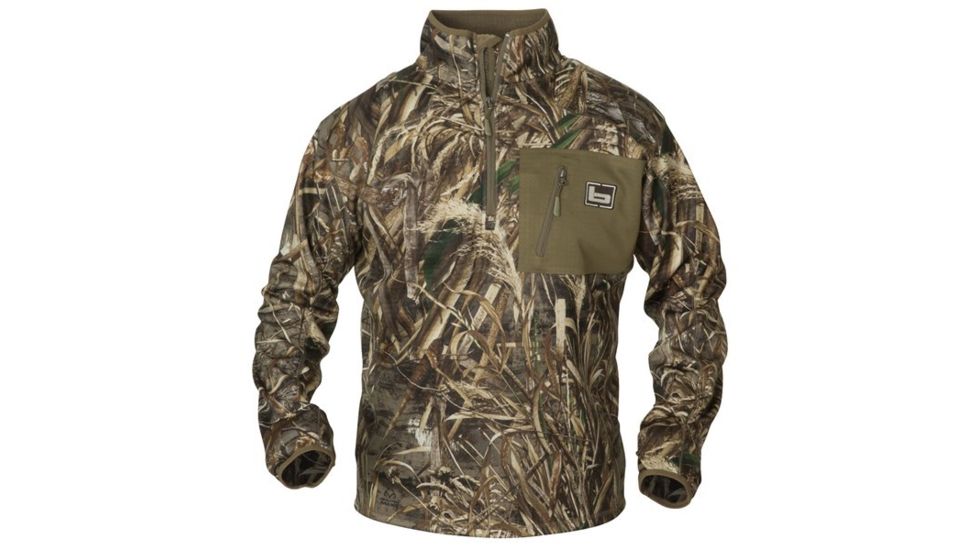
Some examples of mid-layer clothing include synthetic down vests, fleece jackets, and puffer jackets, also known as down jackets. Here are some more tips on choosing mid-layer hunting clothes:
- For warm weather and/or physically demanding hunts, you can skip the mid-layer entirely or wear it as your outer layer, creating a two-layer clothing system.
- Mid-layers are usually compact, so store it in your hunting pack or vehicle just in case!
- For cooler conditions and/or moderately active hunts, you can wear a fleece or synthetic insulated jacket or vest. Polyester and merino wool are also suitable mid-layer materials.
- For freezing cold conditions, you should wear a thick insulated jacket that traps the most warmth possible. Down jackets provide the best insulation, but they should only be worn with a waterproof outer layer.
Down insulation is great for keeping warm, but it is ineffective when wet. That is why you should only wear them with an outer layer that offers weather protection. Synthetic insulation provides plenty of warmth for most hunts and is effective even if it gets wet, making it a better option for milder temperatures.
Outer Layer
While the first two layers focus on warmth and dryness, the outer layer is all about protection. It is the first layer of defense between you and the wilderness.
The main purpose of an outer layer is to protect you from the elements and your environment.
The outer layer acts as a protective shell that shields you from harsh weather conditions and environmental hazards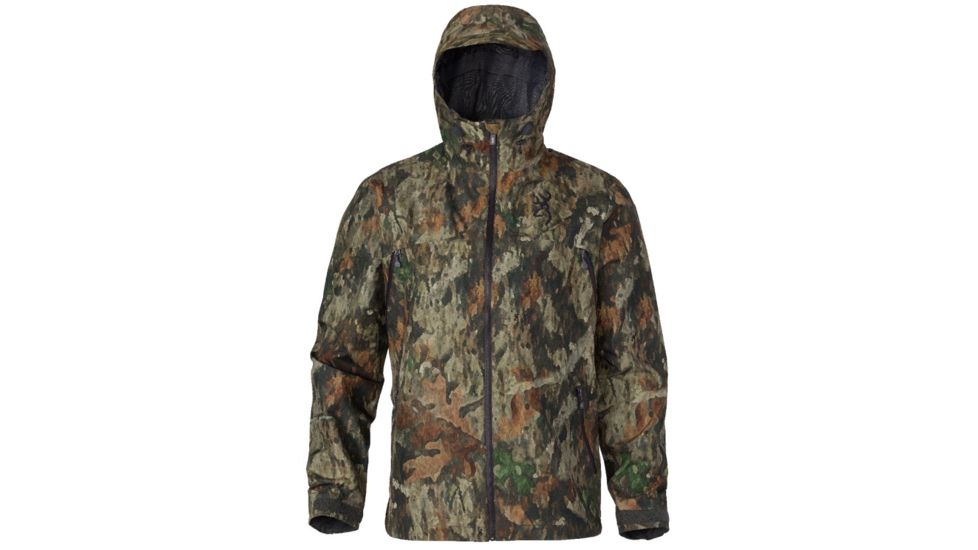 like branches and thorns. The thickness of your outer layer depends on the temperature: thick outer layers are better for colder temps, and lightweight outer layers are better for milder conditions.
like branches and thorns. The thickness of your outer layer depends on the temperature: thick outer layers are better for colder temps, and lightweight outer layers are better for milder conditions.
Some materials, like GORE-TEX, have waterproof and breathable membranes that offer superior weather protection and breathability. A breathable outer layer helps manage moisture and improves comfort, and breathability is even more important in milder conditions or if you’ll be physically active.
The outer layer is also the first piece of clothing animals can see, so choosing the right camouflage is essential if you want to fill your freezer this hunting season. We’ll get into this in a bit.
Biggest Mistake First-Time Hunters Make
The worst clothing choice a new hunter can make is wearing cotton. Cotton absorbs liquid like crazy, and it won’t dry throughout the day. Wet cotton socks in cold temperatures can be bad news, so make sure to avoid cotton materials at all costs
How to Choose the Best Camouflage for Hunting Clothes
Hunting clothes offer a vast selection of camo patterns to help you blend into nearly any environment. There are two main types of camouflage to consider for a hunt:
- Mimicry camouflage mimics your surroundings using patterns with grass, leaves, bark, and other elements of nature.
- Breakup camouflage, also known as digital camo, breaks up your outline using various shapes and colors not necessarily found in nature.
However, choosing the optimal camo color involves much more than just matching your surroundings. You need to consider the animal you’re hunting and how they
perceive color to know which type of camo is right for you.
How to Choose Camouflage Based on the Animal You’re Hunting
Different animals see colors and patterns in unique ways. Knowing how your intended prey sees color is the key to picking out the best camo for your hunt.
- Deer and Big-Game Hunting: Deer and most large game struggle to spot differences in color, but they can easily see movement and differences in texture. Therefore, breakup camo is best for deer hunting.
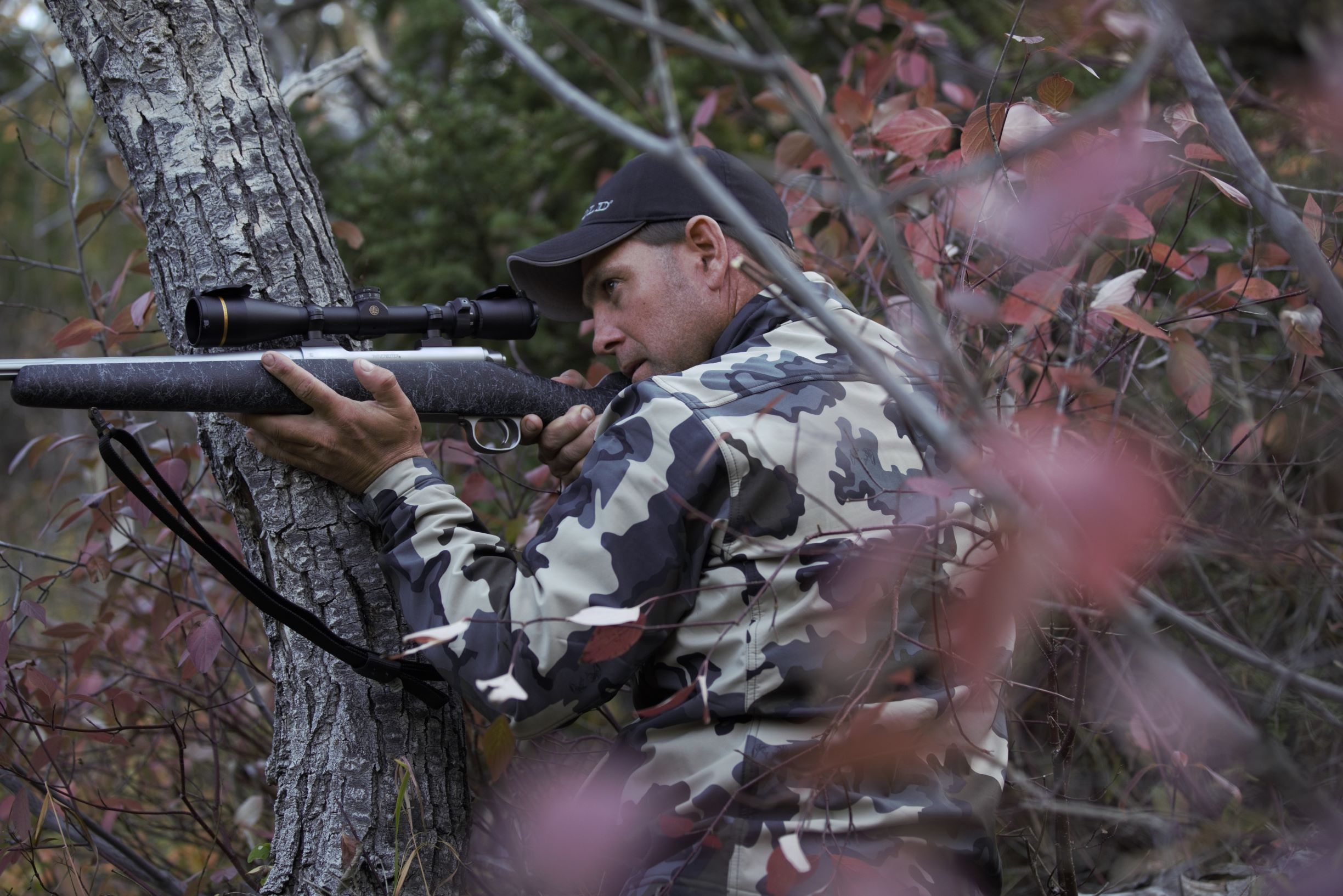
- Waterfowl: On the contrary, ducks and other waterfowl can see colors well. Mimicry camo is best for waterfowl hunting, as long as your pattern resembles a marsh with tall grass, cattails, and other natural elements of wetland habitats.
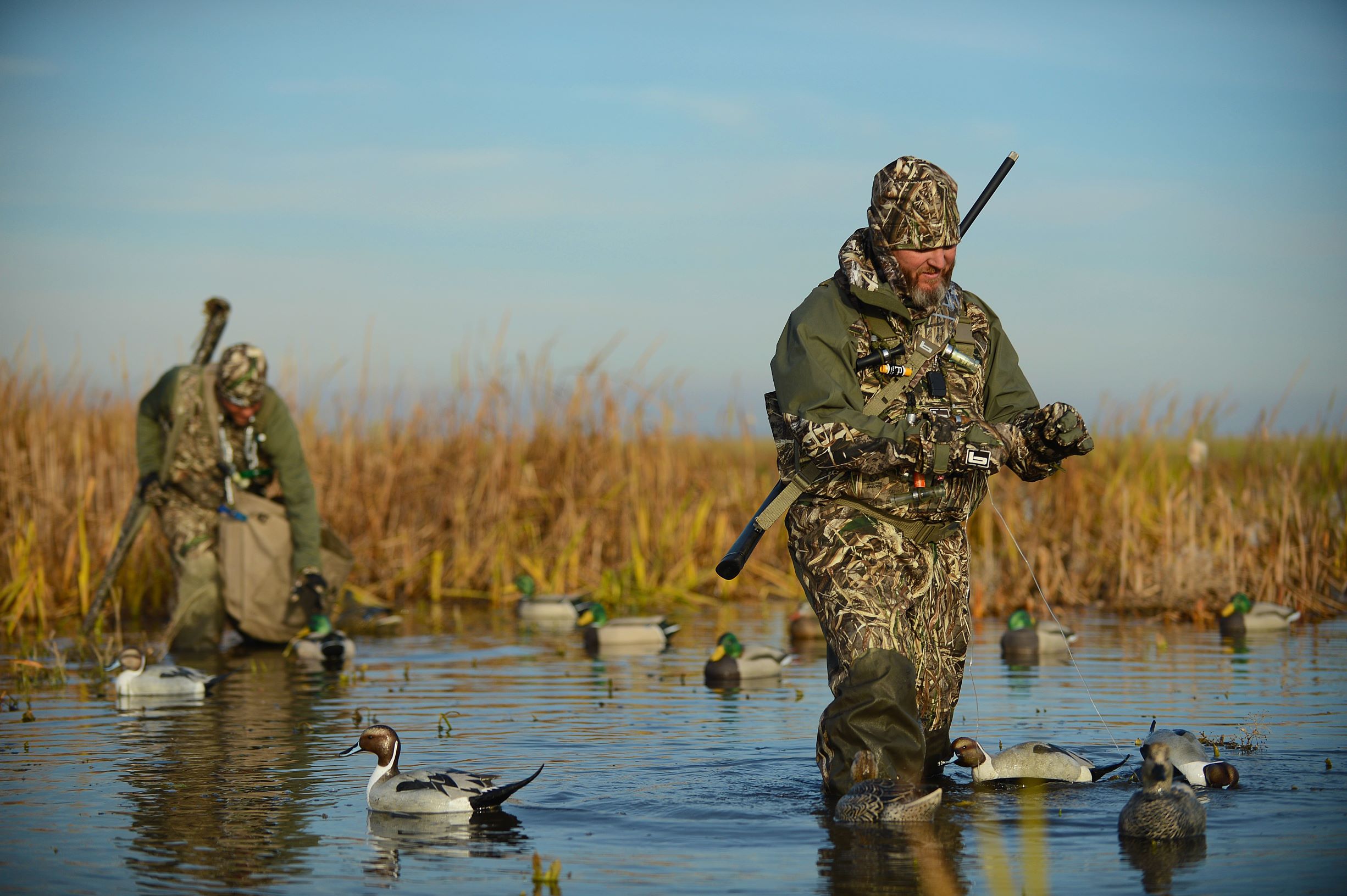
Blaze Orange and Hunter Safety
The camouflage discussed above is for the animals, but blaze orange is for other hunters. The bright, fluorescent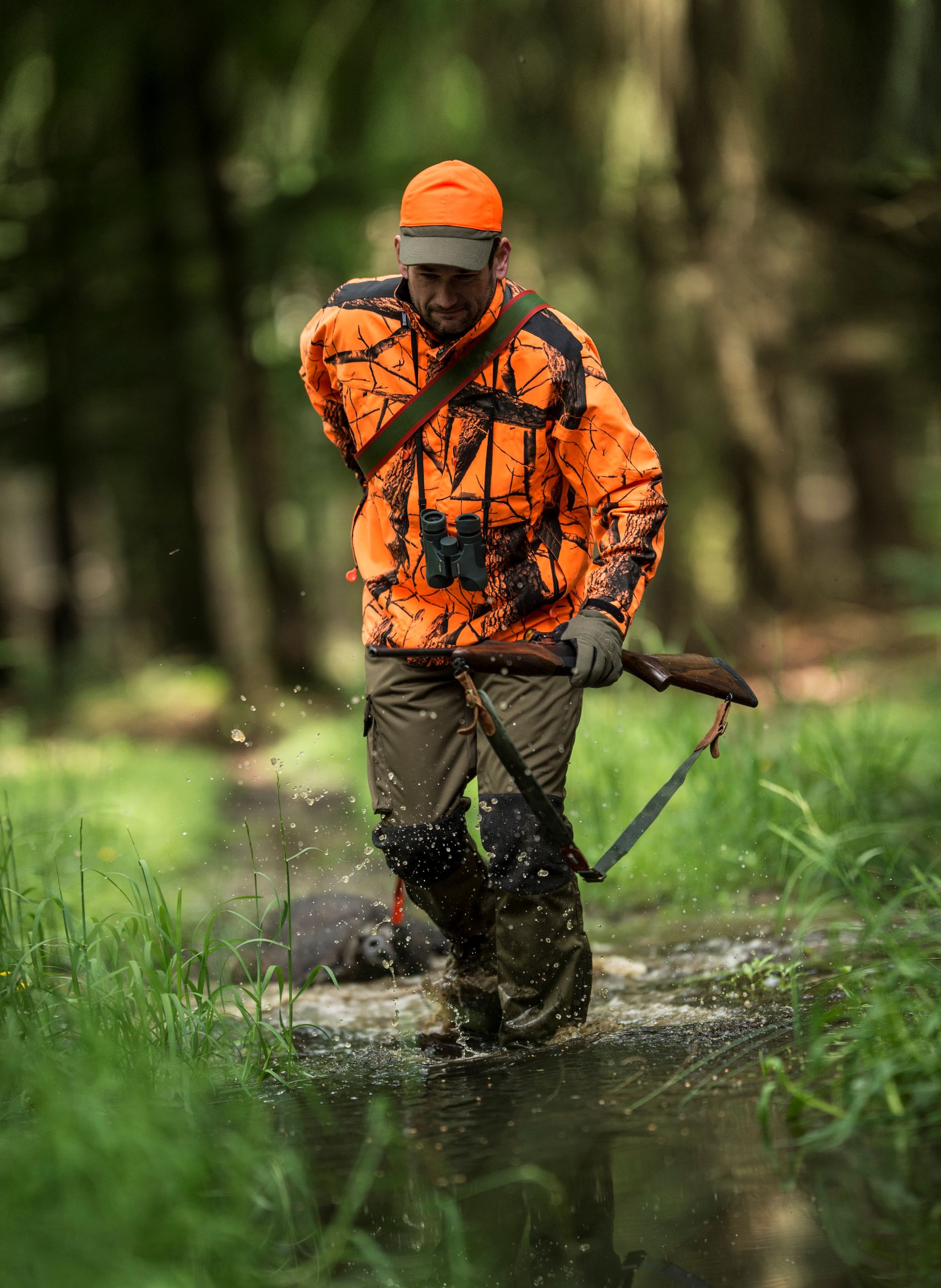 orange color, also known as safety orange, is easy for other hunters to spot and helps create a safer hunting environment. Most states require some type of blaze orange, whether it be a minimum area of coverage or certain apparel. Make sure to look up your local and state laws before heading out to the hunting grounds.
orange color, also known as safety orange, is easy for other hunters to spot and helps create a safer hunting environment. Most states require some type of blaze orange, whether it be a minimum area of coverage or certain apparel. Make sure to look up your local and state laws before heading out to the hunting grounds.
Deer and other big game can’t see the bright orange color well, so wearing blaze orange won’t impact your efficiency on a hunt. Ducks and waterfowl can see colors well, which is why many states do not require blaze orange for waterfowl hunting. You should still wear safety orange clothing while heading to the hunting site, and many hunting clothes are reversible with one side camouflage, the other blaze orange.
How to Choose Hunting Pants
There are many types of pants that suit hunters well, but you need to keep camouflage in mind while shopping for hunting pants. Once you have the camo down, you need to consider comfort, warmth, and features that fit your needs.
Good hunting pants have these qualities:
- Durability: You need tough pants that will hold up in harsh conditions and protect your legs from sharp thorns and branches.
- Quiet Fabric: Some synthetic fabrics can be noisy (swish, swish, swish). Look for “silent” or “quiet” hunting clothes that minimize sound during movement.
- Scent Control: This isn’t a must if you have other forms of masking your scent, but it is certainly a nice feature to have that will further hide your scent from prey.
- Comfortable: Stretch fabric, elastic waistbands, and crotch gussets are examples of features focused on comfort. You want hunting pants that are easy to climb in and out of treestands with, and this is especially important for more exerting hunts.
- Gear Storage: Good hunting pants resemble good tactical pants when it comes to utility. You want plenty of useful pockets and sturdy belt loops that can support a holster and other equipment.
Consider the three-layer clothing system when shopping for hunting pants. There are lightweight pants for warm weather, insulated pants for frigid temperatures, and hunting pants designed for mild conditions.
What Else to Wear on a Hunting Trip
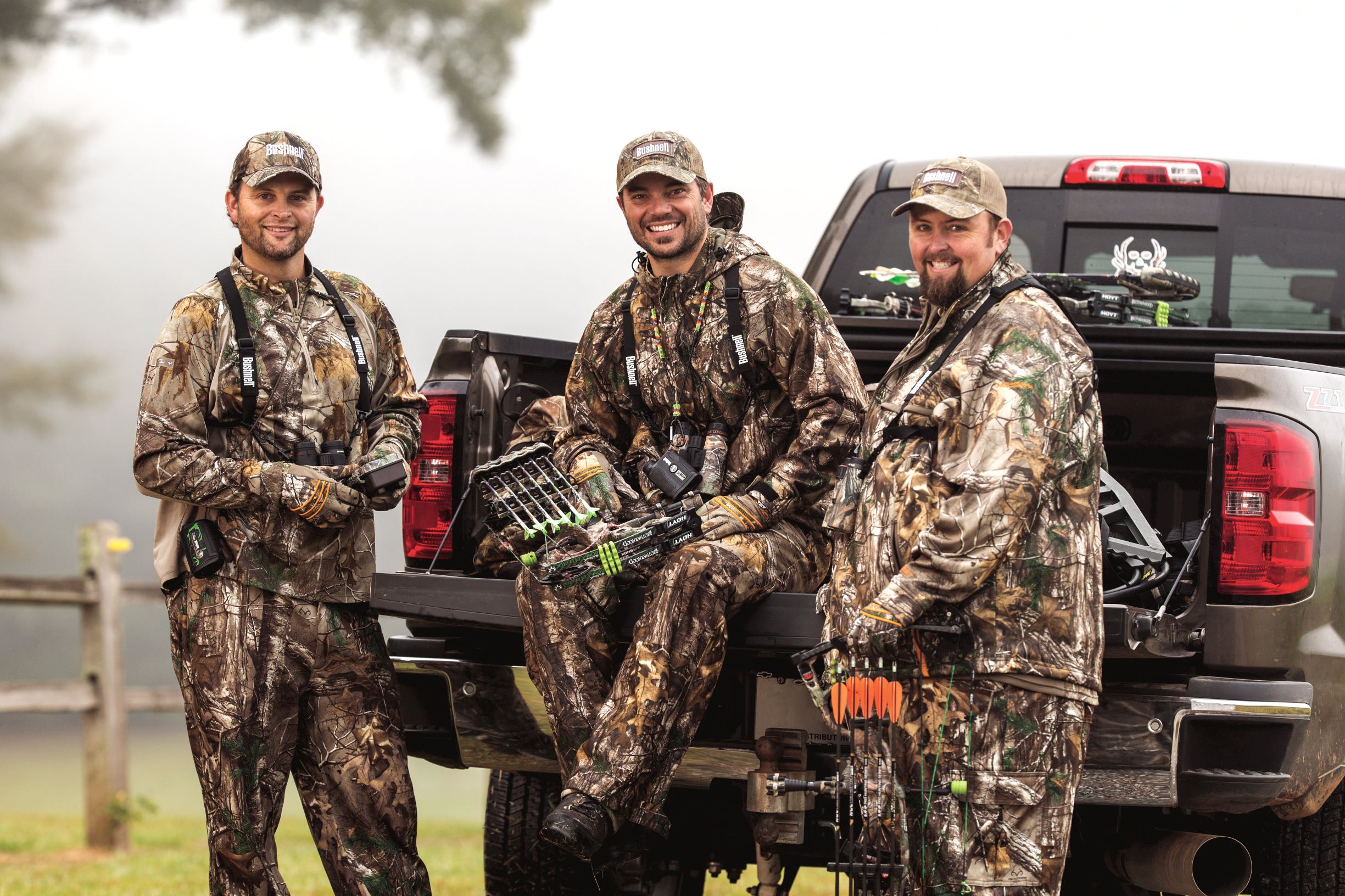
Depending on where you’re hunting, you may want to consider the following apparel for your outing:
- Wear a hat if it will be sunny out to shield your eyes and head from harmful UV rays
- For cold conditions, opt for a beanie that will keep your ears and head warm.
- Gloves are a great way to protect your hands and keep them warm in the winter. Besides shooting gloves, consider an extra pair of mittens for cold conditions. If you’ll be using a GPS or other devices, make sure to buy gloves that are touchscreen-compatible.
- Neck gaiters are great for hunting since they provide protection from chilly winds in cold climates and UV rays in sunny conditions.
Hangin’ It Up
By now, you hopefully know how to shop for hunting clothes that best match your environment, conditions, and type of hunt. Dressing properly for a hunting trip is important, and ensures you stay safe, comfortable, and protected.
As a reminder, here’s a quick recap of what we covered:
- Creating a three-layer hunting clothes system is the best way to control temperature, manage sweat, and stay protected from the elements.
- NEVER wear cotton hunting clothes because they absorb water easily and take too long to dry.
- The best deer hunting camouflage is breakup (digital) camo that blurs your outline.
- The best duck and waterfowl hunting camouflage is mimicry camo that contains natural patterns resembling your surroundings.
- Blaze orange is required in most states and should be worn by all hunters to improve everyone’s safety.
- Deer cannot distinguish blaze orange so it will not impact how they see you.
- Good hunting pants are durable, comfortable, and have plenty of pockets. Great hunting pants are quiet and have built-in scent control.
Looking for new hunting clothes? Make sure to check out OpticsPlanet’s massive collection of hunting apparel and gear to prepare for your next big outing. Now, let’s roll up our sleeves and have a safe and fruitful hunting season!
- What Is a Red Dot Sight Good For? - August 16, 2021
- What Binocular Magnification Is Best for Hunting? - August 16, 2021
- What Is a Training Knife? - July 23, 2021
Related Posts
« What Is the First Step in Cleaning a Firearm? How to Clean Your Gun How to Clean a Gun: Beginner’s Guide to Cleaning Firearms »


